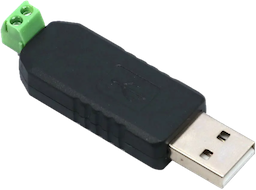Python library to control XY Screens and See Max projector screens and lifts
Introduction
This python library lets you control XY Screens and See Max projector screens and lifts over the serial and RS-485 interface.
This python library was first implemented for XY Screens. After I was informed that the See Max devices use a very similar protocol support for these devices has been added.
XY Screens and See Max are OEM manufacturers of projector screens and lifts, their devices are sold around the world under various brand names.
Features
- Position control, move the screen/lift to any position along the way
- Program device address on devices that support this
- Use multiple devices on the same RS-485 interface
- Synchronous and asynchronous methods
- Uses Callbacks for asynchronous methods
About position control
The XY Screens and See Max projector screens and lifts do not provide any positional feedback. The state of the screen is thus always an assumed one. The screen position is calculated based on the time the cover has moved and the configured up and down durations. This results in a potential error margin. Every time the screen reaches it maximum up or down position the position and thus any potential error is reset accordingly. If the screen is controlled outside the library, for instance with the remote control, the screen position and state will no longer represent the actual state.
Hardware
I use a cheap USB RS-485 controller to talk to the projector screen where position 5 of the RJ25 connector is connected to D+ and position 6 to the D-.

See the documentation of your specific device on how to wire yours correctly.
Protocol
If your devices follows the following protocol it's supported by this Python library:
2400 baud 8N1
Up command : 0xFF 0xXX 0xXX 0xXX 0xDD
Down command: 0xFF 0xXX 0xXX 0xXX 0xEE
Stop command: 0xFF 0xXX 0xXX 0xXX 0xCC
Where 0xXX 0xXX 0xXX is the three byte address of the device.
For XY Screens devices the default address is 0xAA 0xEE 0xEE, while for See Max devices the default
address is 0xEE 0xEE 0xEE.
Supported projector screens and lifts
The following projector screens is known to work:
- iVisions Electro M Series
The following projector screens and lifts are not tested but use the same protocol according to the documentation:
XY Screens:
- iVisions Electro L/XL/Pro/HD Series
- iVisions PL Series projector lift
- Elite Screens
- KIMEX
- DELUXX
- Telon
See Max:
- ScreenPro
- Monoprice
- Grandview
- Dragonfly
- WS Screens
- Cirrus Screens
- Lumien
- Celexon
Please let me know if your projector screen or projector lift works with this Python library so I can improve the overview of supported projector screens and lifts.
Installation
You can install the Python XY Screens library using the Python package manager PIP:
pip3 install xyscreens
xyscreens CLI
You can use the Python XY Screens library directly from the command line to move your screen up or down or to stop the screen using the following syntax:
Move the screen down: python3 -m xyscreens <serial port> <address> down <duration>
Stop the screen: python3 -m xyscreens <serial port> <address> stop
Move the screen up: python3 -m xyscreens <serial port> <address> up <duration>
Where <address> is the six character hexadecimal (three bytes) address of the device. <duration>
is the optional time in seconds to move the screen up or down, when given the process will wait
till the screen is up or down and show the progress.
For XY Screens devices the default address is AAEEEE, while for See Max devices the default
address is EEEEEE. If you have reprogrammed the device address use the according address.
Programming the device address
Some See Max projector screens and lifts which use the RS-485 interface seem to allow to program the device address. This way multiple devices can be connected to the same RS-485 interface. Each device should have a unique address.
python3 -m xyscreens <serial port> <address> program
Where <address> is the to be programmed three byte address.
Troubleshooting
You can add the --debug flag to any CLI command to get a more details on what's going on. Like so:
python3 -m xyscreens <serial port> <address> down <duration> --debug
Support my work
Do you enjoy using this Python library? Then consider supporting my work using one of the following platforms, your donation is greatly appreciated and keeps me motivated:
Hire me
If you're in need for a freelance Python developer for your project please contact me, you can find my email address on my GitHub profile.







